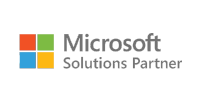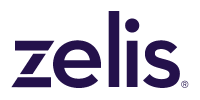- Home
- What we do
- Market
- Payers
PAYERS
Powering end-to-end Payer transformation with cutting-edge innovation
Revolutionizing Payer operations to lower costs, streamline processes, improve member experience and outcomes.
PAYERS
Next-gen solutions for an ever-evolving Payer market
The healthcare landscape is undergoing a rapid transformation. The explosion of value-based care models, evolving regulations from CMS, NCQA, and ONC, ever-increasing focus on member and Provider experience, and cost pressures are just some of the disruptive forces impacting Payers today. Payers need to overcome data interoperability barriers, ramp up cybersecurity, and shed the weight of outdated legacy systems. CitiusTech’s cutting-edge technology solutions are helping Payers deliver exceptional member experiences, achieve quality care goals, foster data-driven decision making and thrive in the new era of healthcare.
PRESS RELEASE
CitiusTech Awarded a 2024 AWS Partner Award
TESTIMONIAL
Tandigm Health’s strong partnership with CitiusTech for driving tech enablement and operational excellence together
PRESS RELEASE
Simplify Healthcare and CitiusTech Announce Strategic Partnership to Enhance Payer Solutions
PRESS RELEASE
CitiusTech’s PERFORM+ clinical convergence platform now includes industry’s first GenAI HEDIS solution
REPORT
CitiusTech named a leader and a star performer in Everest Group’s Payer Digital Services PEAK Matrix®
CONNECT WITH US
Elevating Payer efficiency with cutting-edge digital solutions and deep expertise

SUCCESS STORIES
Solving some of the greatest challenges in Healthcare
.png?width=270&height=320&name=white-bg-image%20(2).png)
Case Study
.png?width=270&height=320&name=white-bg-image%20(2).png)
Case Study
WHY CITIUSTECH
Accelerating digital transformation for Payers
+
Payer customers
%
of the top five national
plans are our customers
+
Blue Plans leverages our
products and solutions
SERVICES
Shaping Healthcare Possibilities with intelligent technology solutions
%20(3).webp)




Digital Engineering
Reshaping Healthcare with cutting-edge technology solutions for better patient care

Data Engineering & Data on Cloud
Making Healthcare data the backbone of your organization's strategy





PLATFORMS & PRODUCTS
Enhancing value and quality in Healthcare
Perform+ RealSight
Make the best of price transparency, reduce operational costs, and comply with CMS Transparency Rules with Perform+ RealSight. An end-to-end data and analytics solution that enhances Healthcare contract negotiations by harnessing publicly available pricing data. It empowers Payers, Providers, and patients with insights for informed decisions. It maximizes price transparency, reduces costs, and complies with CMS rules using Perform+ RealSight.
Perform+ Contracts
Oversee value-based contracts while reducing Provider abrasion, gaining seamless coordination, and operational efficiency. Address coordination challenges and manage Provider performance, goals, and incentives across various quality programs.
Perform+
Stars
Leverage AI/ML-based decision engines to enhance CMS Star Ratings, offering clearer data insights and decision support amid constantly changing program metrics. Align Provider and member efforts with tools for measure analysis, list prioritization, and performance projections to optimize Star ratings efficiently.
Perform+ DataScale
Enable a scalable enterprise architecture that adapts to business and technological shifts, securing your data strategy for the future. Enhance data credibility while reducing costs and boosting efficiency across your operational framework. Maximize ROI by decreasing application fragmentation and lower administrative burdens to speed up turnaround times, through a comprehensive view of patient data.






.png?width=1920&height=1080&name=Consulting2_Menu_1%20(1).png)
























